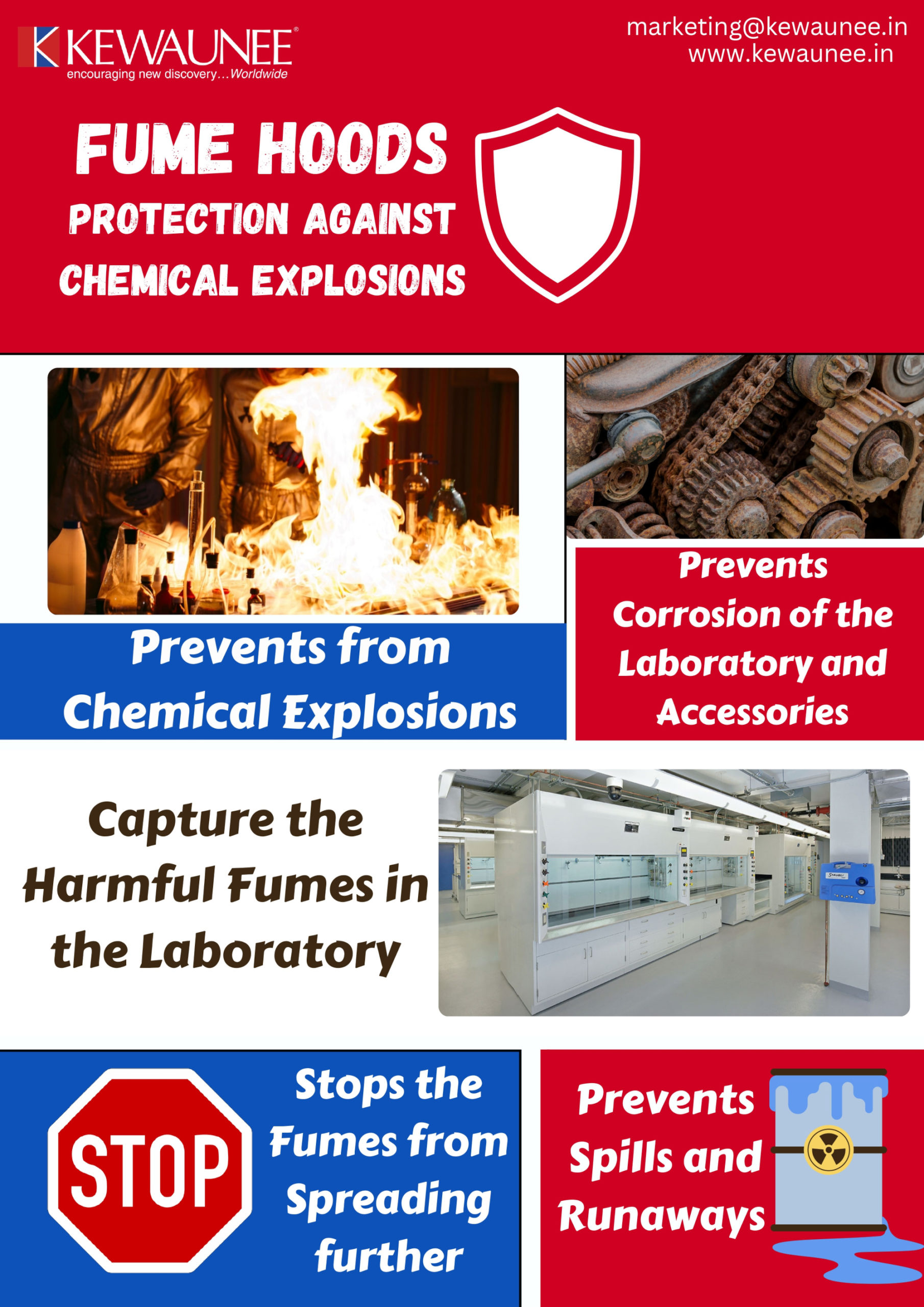Fume Hoods Protection Against Chemical Explosions
Fume hoods, also known as chemical hoods or laboratory hoods, are enclosures that are designed to protect laboratory workers from hazardous fumes, vapors, and dusts. They are commonly used in chemistry and other labs to safely handle and manipulate dangerous chemicals.
Fume Hoods in Laboratory Settings
Fume hoods serve as a barrier between the laboratory worker and the hazardous chemicals being used. They work by creating a negative pressure within the hood, which pulls the fumes and vapors away from the user and exhausts them out of the building through a venting system.
This helps to protect the worker from inhaling dangerous chemicals, as well as preventing explosions or fires.
Fume Hoods in Preventing Chemical Explosions
Fume hoods play a critical role in preventing chemical explosions by containing and exhausting potentially explosive fumes, vapors, and dusts.
Without a fume hood, laboratory workers would be at risk of inhaling harmful chemicals, which could lead to serious health problems, and the laboratory itself would be at risk of a chemical explosion.
How Fume Hoods Work
Design and Mechanics of Fume Hoods
Fume hoods are typically made of metal and are equipped with a sash (a window-like opening) that can be adjusted to control the flow of air. They also have a blower that creates a negative pressure within the hood, which pulls the fumes and vapors out of the hood and into the exhaust system.
How Fume Hoods Contain & Exhaust Hazardous Fumes
Fume hoods work by creating a negative pressure within the hood, which prevents the fumes and vapors from escaping out of the hood and into the laboratory. This is achieved by using a blower to pull air out of the hood and exhaust it out of the building.
This creates a flow of air that goes from the laboratory, through the hood, and out of the building, which helps to contain and exhaust the hazardous fumes.
Standards and Regulations for Fume Hoods
Organizations that set guidelines for fume hood safety
Organizations such as OSHA, NIOSH, and ASHRAE provide guidelines for the safe design, installation, and use of fume hoods. These guidelines help to ensure that fume hoods are functioning properly and providing adequate protection for laboratory workers.
Specific Standards and Regulations for fume hoods
OSHA has specific regulations for fume hoods, including requirements for regular testing and certification to ensure that they are functioning properly.
Additionally, ASHRAE has guidelines for the design and construction of fume hoods, including recommendations for the minimum face velocity and the size of the sash opening.
Regular testing and maintenance of fume hoods
Regular testing and maintenance are essential to ensure that fume hoods are functioning properly and providing adequate protection for laboratory workers. This includes regular inspections, testing for proper airflow, and replacing filters as needed.
It is important for laboratory managers to have a regular schedule for testing and maintenance to ensure that the fume hoods meet the standards and regulations set by OSHA, NIOSH, and ASHRAE.
Without regular testing and maintenance, fume hoods may not be able to effectively contain and exhaust hazardous fumes, putting laboratory workers at risk.
Risks and Precautions when Using Fume Hoods
Chemicals that require the use of fume hoods
Fume hoods are commonly used to handle and manipulate chemicals such as acids, bases, solvents, and radioactive materials.
These chemicals can release harmful fumes and vapors when manipulated, and can cause serious health problems if inhaled.
Potential risks of not using fume hoods
Without the use of a fume hood, laboratory workers are at risk of inhaling dangerous chemicals, which can lead to serious health problems such as lung damage, irritation of the eyes, nose, and throat, and even cancer.
Additionally, not using a fume hood can also increase the risk of fires and explosions in the laboratory.
Safe use and handling of chemicals within a fume hood
To use a fume hood safely, laboratory workers should always follow the manufacturer’s instructions, as well as the guidelines set by OSHA, NIOSH, and ASHRAE. This includes adjusting the sash opening to the appropriate level, making sure that the hood is functioning properly, and using the appropriate filters.
Additionally, laboratory workers should be properly trained on the safe handling and disposal of the chemicals they are working with, and should wear the appropriate personal protective equipment.
Conclusion
Fume hoods play a critical role in preventing chemical explosions by containing and exhausting potentially explosive fumes, vapors, and dusts. Without a fume hood, laboratory workers would be at risk of inhaling harmful chemicals, which could lead to serious health problems, and the laboratory itself would be at risk of a chemical explosion.
Proper installation, maintenance, and usage of fume hoods
To ensure that fume hoods are providing adequate protection for laboratory workers, it is important for laboratory managers to ensure that the hoods are properly installed, maintained, and used in accordance with the guidelines set by OSHA, NIOSH, and ASHRAE.
Prioritize fume hood safety
As a laboratory worker, it is important to prioritize fume hood safety in your work by following the manufacturer’s instructions, guidelines set by OSHA, NIOSH, and ASHRAE, and also by wearing the appropriate personal protective equipment.
Additionally, it is important to report any problems or concerns with the fume hoods to laboratory managers, so that they can be addressed and corrected in a timely manner. By prioritizing fume hood safety, laboratory workers can help to prevent chemical explosions and protect their own health and well-being.
Comments are closed.











